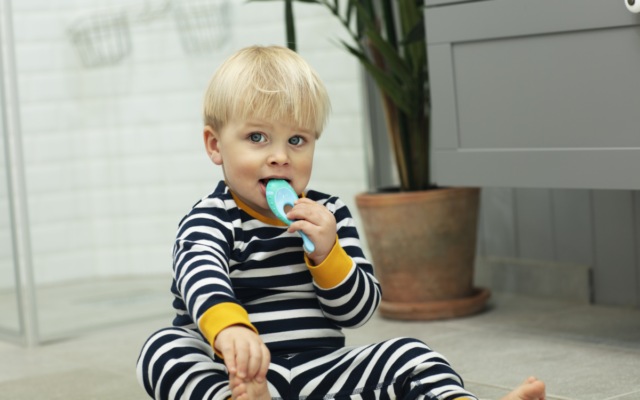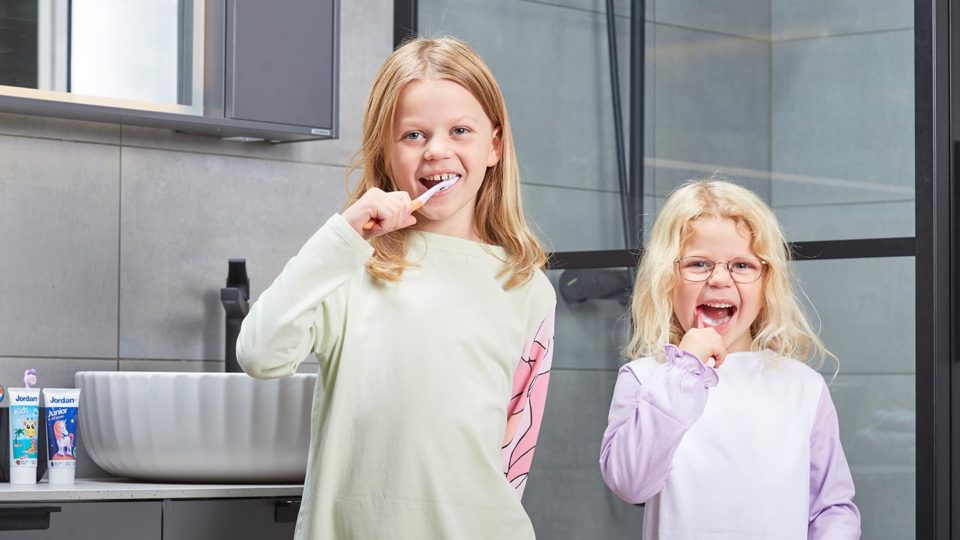Teething: When do babies teeth?
Teething is the process when an infant’s first teeth appear by emerging through the gums. The process starts with the incisors, the front teeth, and moves backwards to the molar teeth until all the fully-grown milk teeth are in place. But when do babies actually teeth?

The first tooth usually starts emerging when the baby is around seven-eight months old. It’s often one of the front teeth in the lower jaw that emerges first. The moment a baby starts growing teeth varies greatly, so there’s nothing wrong if signs of teething start appearing that quickly – some start growing teeth at three months, while others can be one year old before the first tooth appears. But the most common age is between six and ten months.
After the two first front teeth in the lower jaw it’s usually the four front teeth in the upper jaw that show next. They’re often followed by the canine teeth in the lower jaw. Most kids will have their eight front teeth at the age of one.
This is the common order for teething:
• 6-12 months: first four front teeth
• 9-16 months: all front teeth
• 16-23 months: canine teeth
• 13-19 months: premolar teeth
• 22-33 months: molar teeth
SIGNS OF TEETHING
One of the first signs of teething is increased drooling, it can start as early as two months before the first tooth emerges. Many kids feel discomfort and have itchy gums before the teething process starts. You can relieve discomfort with teething toys which they can chew on.
When the time has come for the teeth to emerge the baby’s gums are likely to be swollen. You might also see lumps in the gums. A good tip is to use a cool biting ring for relieve. But remember that it shouldn’t be too cold, or frozen.
Many parents wonder if growing teeth is painful. Teething can cause pressure and itching but does usually not cause open wounds. Kids are more irritable, have trouble sleeping and will most likely lead to more crying than usual.
RELIEVE DISCOMFORT OF GROWING TEETH
To relieve the discomfort of growing teeth there are a few things you can do in addition to cooled teething toys:
• Give your child something to chew on, like a firm rubber teething ring or a cold washcloth that you’ve cooled in the refrigerator, not freezer. You can also rub your clean finger gently but firmly over your baby’s sore gums to ease the pain temporarily.
• Babies can also chew on feeding bottles and pacifiers. Just remember to clean them well, since traces of juice, sugary drinks and milk can lead to tooth decay.
Related articles

Creating Oral Care Habits for Kids
It can be difficult to create oral care habits for kids that stick. As a parent you might have to get creative when encouraging your…
Read more
Environmentally friendly toothpaste for kids
When choosing your kid's toothpaste, it is important to consider the ingredients. The Jordan Green Clean environmentally friendly toothpaste for kids 0-5 years contribute to…
Read more
Creating Oral Care Habits for Kids
It can be difficult to create oral care habits for kids that stick. As a parent you might have to get creative when encouraging your…
Read more